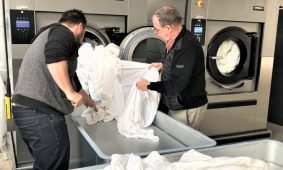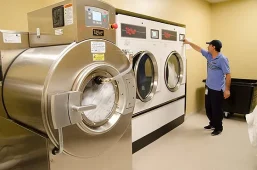A2Bookmarks Australia Social Bookmarking Website
Welcome to A2Bookmarks Australia, your premier destination for effortless social bookmarking down under. Our platform is designed to help Australians easily save, manage, and share their favorite web pages and URLs. Whether you’re a business owner looking to enhance your online visibility across Australia or an individual wanting to organize your go-to websites, A2Bookmarks Australia provides a streamlined and user-friendly solution. Connect with our Australian community, utilize powerful bookmarking tools, and boost your digital presence with confidence. Dive in today and transform the way you bookmark and share online content!


Is CNC a mill or lathe? medium.com
Some folks think CNC is just a machine. Others say it’s a process. But here’s the twist—CNC isn’t a machine in itself. It’s a way of operating machines. Whether you’re staring at a mill or a lathe, CNC (Computer Numerical Control) is the tech driving it. So, is CNC a mill or a lathe? Neither. But also—both. Let’s break it down.
What exactly is CNC: a machine or a method?
CNC stands for Computer Numerical Control. It’s a method of automating machinery using programmed commands, without needing manual intervention at each step.
You can think of it like this: If traditional machining is driving a manual car, CNC is like setting a destination in a Tesla and letting it steer—precisely, predictably, and without fuss.
So no, CNC isn’t a type of machine. It’s a control system that can be applied to many different types of machines—including both mills and lathes.
What’s the difference between a mill and a lathe?
At their core, both milling and turning (lathe work) remove material to shape parts. But they go about it very differently.
| Feature | CNC Mill | CNC Lathe |
|---|---|---|
| Primary Motion | Cutting tool rotates | Workpiece rotates |
| Typical Parts | Complex surfaces, slots, pockets | Cylindrical parts like shafts |
| Axes | Usually 3 to 5 axes | Usually 2 axes (X and Z) |
| Tool Movement | Moves around stationary workpiece | Cutting tool moves while part spins |
So, a CNC mill removes material by moving a rotating tool across a fixed workpiece. A CNC lathe, on the other hand, spins the workpiece while a stationary tool carves away at it.
It’s a bit like the difference between a sculptor moving a chisel across a stone vs. spinning the stone and holding the chisel still.
Can the same CNC controller run both a lathe and a mill?
Short answer: Yes—but it depends.
Modern CNC controllers are increasingly versatile. Multi-tasking machines like mill-turn centres blur the lines between the two. These hybrid beasts can spin like a lathe and cut like a mill, all under the same controller.
But typically, mills and lathes have different setups, programming codes (like G-code variations), and tooling requirements. So while the idea of CNC remains the same, the implementation can differ.
Why does it matter—mill vs. lathe?
Because choosing the right machine affects everything: time, cost, accuracy, and finish.
-
Cylindrical or rotational parts? Go lathe.
-
Intricate, angular, or 3D contouring work? Mill it.
Using the wrong one can lead to poor tolerances, unnecessary wear, and job rejections. Anyone who’s spent hours reworking an ill-fitted part knows that sinking feeling in their gut.
Real-world example: Turning heads in automotive parts
Let’s say you’re making a driveshaft. It’s long, round, and symmetrical. A CNC lathe spins it and shapes it efficiently. But what if you need a flat flange on one end? That’s where a mill jumps in.
Some shops use combo machines that start as lathes, then use live tooling (rotating cutting tools) to do basic milling—all in one go. It’s like a Swiss Army knife for metalwork.
So why do people still confuse CNC with the machines?
Because “CNC” gets tossed around casually in shops and factories. Someone might say, “Chuck that part in the CNC,” meaning the CNC mill. Or, “The CNC’s down,” even if it’s a lathe.
It’s shorthand. But technically, CNC is the brain—the computer part. The machine it controls? That’s the body. And like any jobsite, you need both.
Is one more precise than the other?
Not inherently. Both CNC mills and lathes are incredibly precise—down to microns, if calibrated properly. But the type of part often dictates which machine gets better results.
Here’s a quick cheat sheet:
-
Surface finish: Lathes usually win—smoother on round parts.
-
Complexity: Mills dominate—think turbine blades or moulds.
-
Speed: Depends on material and tooling, but lathes often finish simple jobs quicker.
Can a beginner use both?
Absolutely—but not overnight.
Mills usually have a steeper learning curve due to multiple axes and tool paths. Lathes are more straightforward but demand caution—especially when spinning large parts at high RPM.
Good CNC machinists often specialise in one first, then cross-train. And while CAM software helps (like Fusion 360 or Mastercam), there’s no substitute for hands-on hours and mucking about with offsets, feeds, and speeds.
Quick FAQ
Q: Can a CNC lathe do milling?
Yes, if it has live tooling. But it’s not a full replacement for a dedicated mill.
Q: Are mills safer than lathes?
Depends. Lathes have spinning parts that can catch loose clothing or tools. Mills involve moving parts across multiple axes. Both require strict safety practices.
Q: What’s cheaper—CNC mill or lathe?
Lathes tend to be cheaper, especially entry-level ones. Mills, especially 5-axis, can get pricey.
Final thoughts
CNC isn’t a machine. It’s a method—a digital whisper in a machine’s ear, telling it where to go and what to cut. Whether it’s turning on a lathe or milling with precision on a five-axis beast, CNC is the conductor behind the scenes.
And if you’re still curious how this all ties into the broader picture of digital manufacturing and automation, this guide explains CNC machining in depth in real-world terms. It’s a solid starting point for anyone wanting to wrap their head around how modern fabrication truly works.
For deeper industry insights, the ThomasNet overview on CNC machines offers trusted technical context.
Anyone who’s spent time in a noisy workshop knows—machines may make the parts, but it’s the CNC system that makes them dance.














